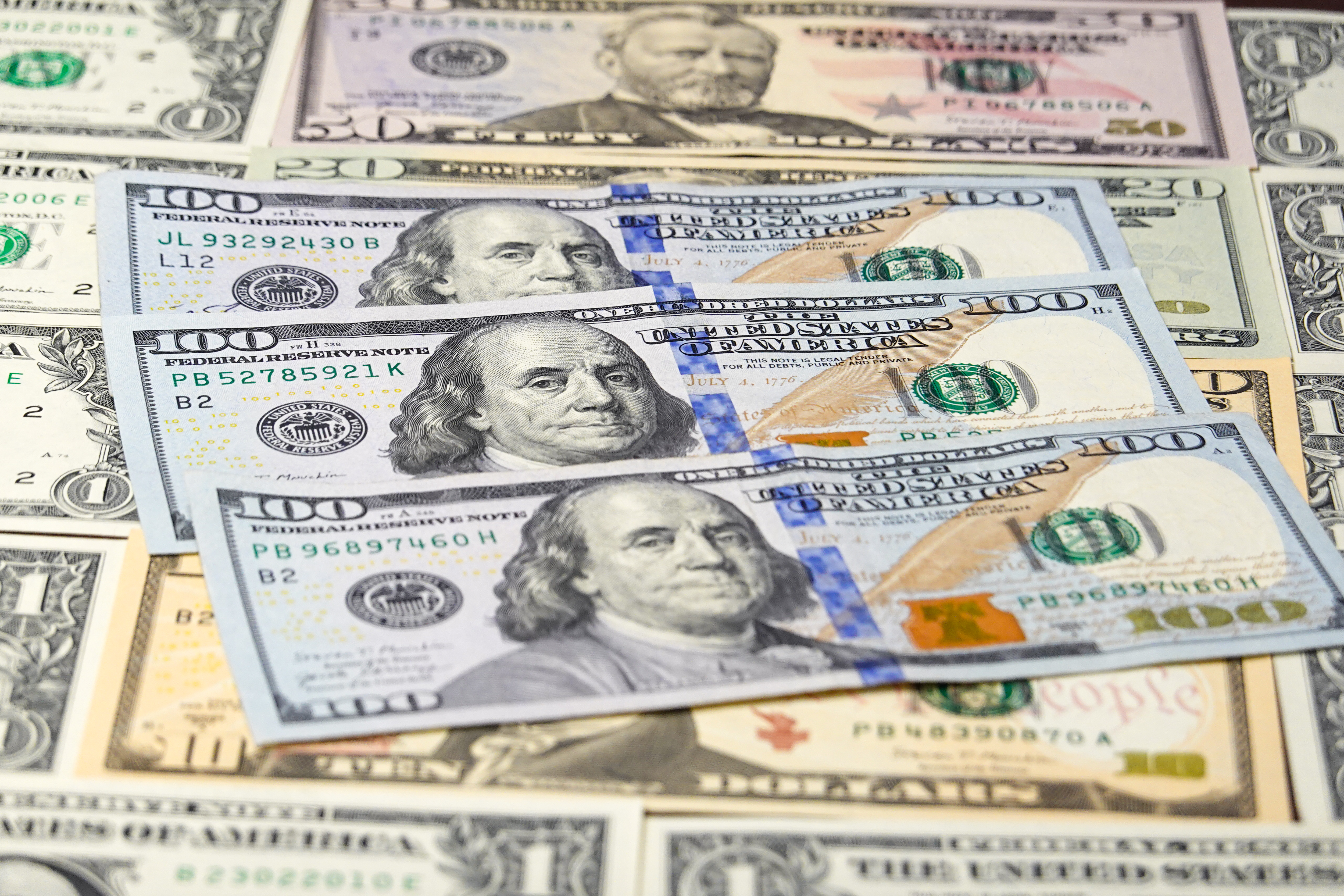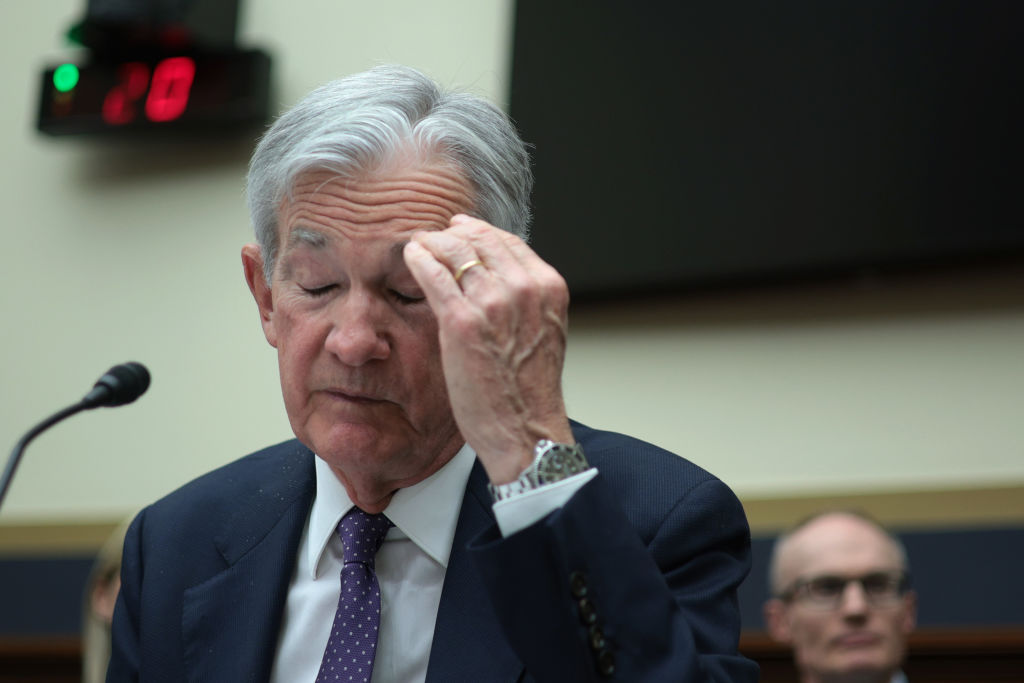Is somebody manipulating the gold market?
Was gold's mini-crash on Friday a conspiracy by the Fed to frighten investors back into cash? It's certainly a theory. But don't let them scare you, says Bengt Saelensminde. Stick with gold - and if you want to top up, here's what to buy.
Markets aren't designed to make life easy for investors. Take gold. In the last week we've witnessed a brutal correction falling from around $1,800 to $1,550. And though it's recovered to mid sixteen hundreds as I write, this assault may not be over yet.
That's because this collapse in gold suits a great number of parties not least central bankers. Some have even gone as far as to say that the sharp selling in gold over the last week was premeditated.
But it doesn't really matter. Today, I'd like to explain what I think was behind the gold collapse. And why I believe the events of the last week change absolutely nothing about the outlook for gold.
MoneyWeek
Subscribe to MoneyWeek today and get your first six magazine issues absolutely FREE

Sign up to Money Morning
Don't miss the latest investment and personal finances news, market analysis, plus money-saving tips with our free twice-daily newsletter
Don't miss the latest investment and personal finances news, market analysis, plus money-saving tips with our free twice-daily newsletter
Why it all started to unravel
I really didn't think that last week's Fed meeting was going to be the catalyst for the latest markdown in gold. But it was.
Last Wednesday, as the Fed wrapped up its two-day meeting I was pretty sure I knew what was coming. Operation Twist had been pretty well flagged and in Wednesday's Right Side I let you know what to expect.
But as the markets digested the Fed's move, it became pretty clear that investors were expecting more. Specifically, they weren't going to be happy with anything less than full-blown money printing, or quantitative easing (QE).
My years in the City have taught me that when the banker-boys don't get their way, they love to throw the toys out of the pram. And boy did markets get hammered this time!
The FTSE 100 headed back below the important psychological 5,000 level not a disaster, but a 6% fall nonetheless.
But then look at what happened to the precious metals: Gold took an 14% knock and silver took an even harder 35% whack. That seems a little harsh.
The press tell us that it's all down to traders cashing in profits from gold to fund losses in the stock market. And while there's probably some truth in that, it can't be the whole picture.
Does the Fed have another game to play?
It's been put to me that the take-down was a deliberate move by the central bankers to shake out gold holders. You see, the last thing the central bankers want is for the public to get too interested in precious metals and dump fiat currencies. So the argument goes the central banks sell paper gold (futures contracts) to drive down the price. The idea is that shell-shocked investors will then bail out too scared to hold this risky asset.
Now there could be some validity to this claim the Fed certainly isn't going to tell us. But it's not the full story. I think there's more to this take-down.
A shock move by the CME
Late on Friday, the Chicago Mercantile Exchange (CME) dealt a hammer blow to the gold futures market. At a time when the market was already falling, the main gold trading exchange demanded increased margin on gold futures contracts. What do I mean by that?
Well, first we need to point out that gold isn't generally traded in physical form. It's a paper-based market where gold is bought in contracts for future delivery. With these contracts traders only need to put down a small amount of capital, known as the margin.
What happened on Friday was that the CME raised the margin from $9,450 to $11,475 per 100-ounce contract. Now bear in mind that with gold closing in on $2,000 an ounce, each contract is worth nearly $200k. And that traders operate with around 20 times leverage that's kind of scary!
So when traders suddenly had to find more cash for the increased margins, they had to sell some of their in-the-money' contracts, which drove down prices.
In fact, every time the CME has raised margins recently, it's had a negative effect on the gold price. Having made their move on Friday evening, it was little surprise that the market continued to fall on Monday morning.
Over the long run, I've got no problem with raising these margins. One of the main reasons for volatility in precious metals is down to the horrendous leverage that many traders use, making the commodities market a bit of a gambling den.
Ultimately it makes a lot of sense to raise margin requirements as volatility increases. It also makes sense to do so when commodity prices go up else the leverage grows and grows.
But even I have to question the timing of this move. It was bound to hit the market hard at a time when the price was already falling.
And then the vicious circle is complete
Let's recap. First, we had the sell-off following the Fed's decision not to dole out free money for our banker friends on Wednesday. Then we had the squeeze on traders from the main gold exchange in Chicago on Friday. And then in came the technicians to really twist the knife.
Come Monday morning, the technicals (or charts) for gold looked terrible.
My colleague John C Burford certainly called the market right on this one. John saw the double top in gold and he set himself up to profit from it. A short on gold was technically' the right thing to do.
Personally, I'm not keen on using the charts for long-term investment decisions, though they can be useful for trading. In the short-term the charts have an uncanny way of describing investor sentiment and herd behaviour.
In this case we had a run-up to $1,925, then a drop off before another assault at $1,920. Problem was, the second assault didn't hold. Like a mountaineer that loses his footing, the market plummeted, taking out several resistance pegs on the way down.
Interestingly, I heard a well regarded chartist named Dan Norcini predict exactly this scenario a couple of weeks back.
He said "They'll try and paint a double-top in there." That is they' will let the market ride back up to its highs and then bring it down by massive selling. The idea being that when the market sees the double-top, it'll automatically induce even more selling.
The "They" he refers to is the authorities. The guys that purportedly don't want gold to reassert itself as competition to paper currency.
It's an interesting theory but who knows whether it's true. The important thing is this: it doesn't matter. Because it's all just short-term jiggery-pokery. If the charts tell us anything about the long-term picture for gold, it's that we're still in a secular bull market. And that's what we should focus on.
Is this a base from which to climb?
Markets are not supposed to make life easy for us investors. Right now the dreadful macro-economic environment couldn't look better for gold. And yet gold takes a pounding. This sort of counter-intuitive move is Mister Market's way of shaking out weak hands.
Gold is bound to be a particularly uncomfortable ride. Whether that's down to manipulation, or that sly old dog Mister Market. But the key is to keep focused on the ultimate goal.
In August I set out my thinking on how gold could go. You can read it here. I arrived at a risk-adjusted price of $2,935. And I stand by that.
Whether you consider gold to be insurance against financial calamity, or whether you're looking for a way to profit from what could be a mania ahead, it doesn't matter. Just stay focused on the idea that gold could go a lot, lot higher in the years to come.
In fact, this latest downswing could turn out to be a good time to top up. As always, I think an ETF (LSE: PHAU) remains the best way fortraditional investors to build their holding in gold.
This article is taken from the free investment email The Right side. Sign up to The Right Side here.
Important Information
The FSA does not regulate certain activities, this includes the buying and selling of some commodities such as gold.
Your capital is at risk when you invest in shares - you can lose some or all of your money, so never risk more than you can afford to lose. Always seek personal advice if you are unsure about the suitability of any investment. Past performance and forecasts are not reliable indicators of future results. Commissions, fees and other charges can reduce returns from investments. Profits from share dealing are a form of income and subject to taxation. Tax treatment depends on individual circumstances and may be subject to change in the future. Please note that there will be no follow up to recommendations in The Right Side.
Managing Editor: Frank Hemsley. The Right Side is issued by MoneyWeek Ltd.
MoneyWeek Ltd is authorised and regulated by the Financial Services Authority. FSA No 509798. https://www.fsa.gov.uk/register/home.do
Get the latest financial news, insights and expert analysis from our award-winning MoneyWeek team, to help you understand what really matters when it comes to your finances.
Bengt graduated from Reading University in 1994 and followed up with a master's degree in business economics.
He started stock market investing at the age of 13, and this eventually led to a job in the City of London in 1995. He started on a bond desk at Cantor Fitzgerald and ended up running a desk at stockbroker's Cazenove.
Bengt left the City in 2000 to start up his own import and beauty products business which he still runs today.
-
 The challenge with currency hedging
The challenge with currency hedgingA weaker dollar will make currency hedges more appealing, but volatile rates may complicate the results
-
 Can Donald Trump fire Jay Powell – and what do his threats mean for investors?
Can Donald Trump fire Jay Powell – and what do his threats mean for investors?Donald Trump has been vocal in his criticism of Jerome "Jay" Powell, chairman of the Federal Reserve. What do his threats to fire him mean for markets and investors?
-
 Freetrade’s new easy-access funds aim to beat top savings rates
Freetrade’s new easy-access funds aim to beat top savings ratesFreetrade has launched an easy-access exchange traded fund (ETF) range - here’s how the ETFs work and how they compare to the savings market
-
 Go for value stocks to insure your portfolio against shocks, says James Montier
Go for value stocks to insure your portfolio against shocks, says James MontierInterview James Montier, at investment management group GMO, discusses value stocks and slow-burn Minsky moments with MoneyWeek.
-
 Where do we go from here?
Where do we go from here?Features A new series of interviews from MoneyWeek
-
 As China reopens, why pick an income strategy?
As China reopens, why pick an income strategy?Advertisement Feature Yoojeong Oh, Investment Manager, abrdn Asian Income Fund Limited
-
 Income in the USA
Income in the USAAdvertisement Feature Fran Radano, manager on The North American Income Trust
-
 The challenge of turbulent markets
The challenge of turbulent marketsAdvertisement Feature Today, ISA investors face one of the most challenging economic environments seen in recent years. However, good companies can still thrive, even in the toughest economic conditions. That’s why BlackRock’s fund managers focus on these businesses when they’re looking for investment opportunities.

